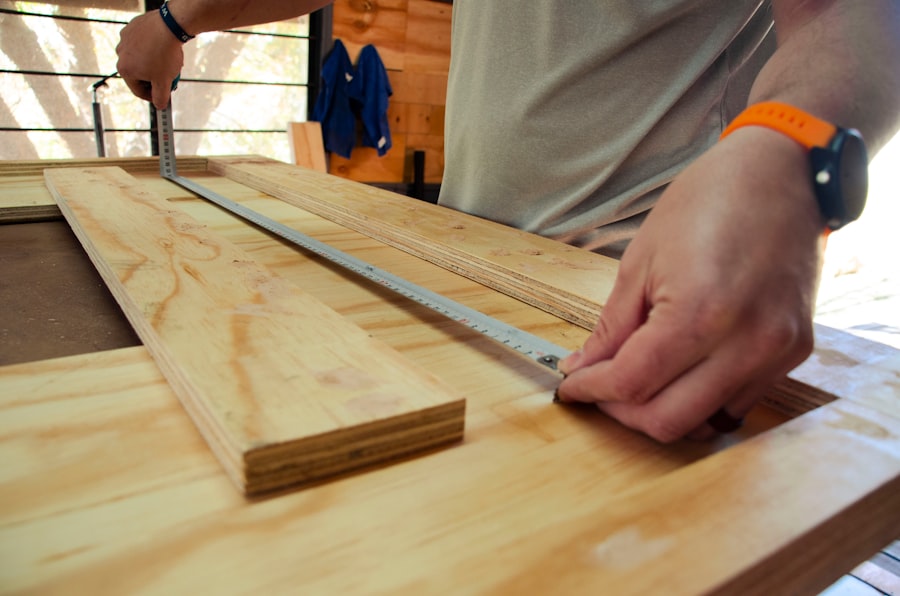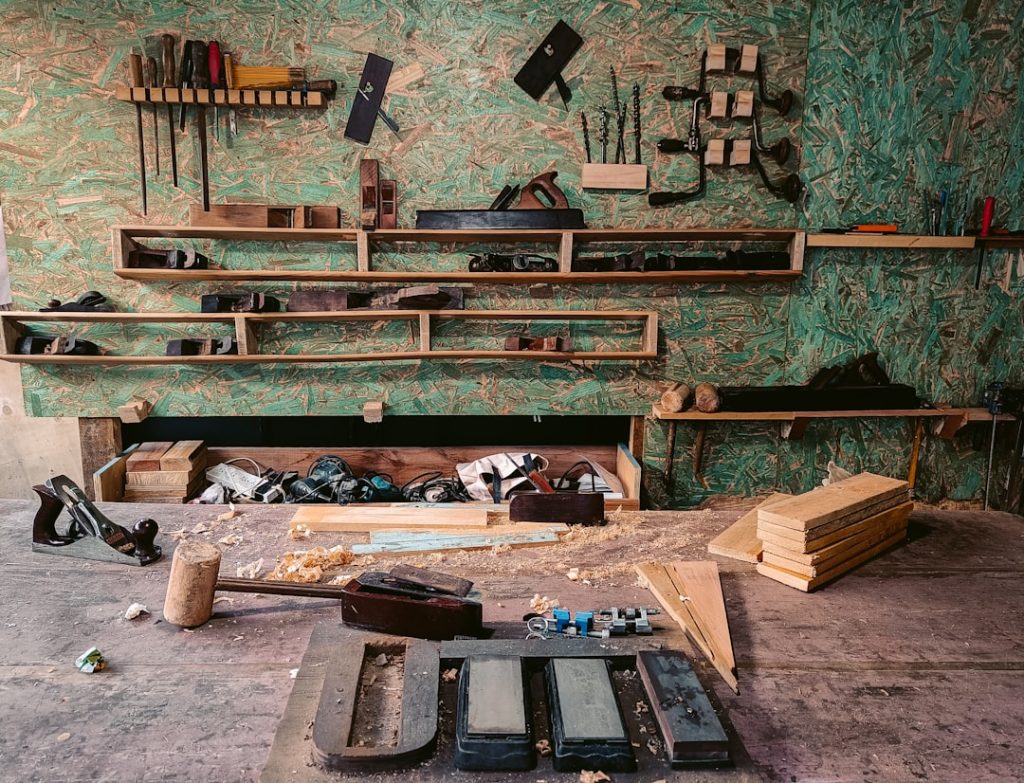Custom cabinets are a hallmark of personalized home design, offering homeowners the opportunity to create storage solutions that are tailored to their specific needs and aesthetic preferences. Unlike stock cabinets, which are mass-produced and come in standard sizes and finishes, custom cabinets are built to fit the unique dimensions of a space and can be designed to reflect individual style. This level of customization allows for a greater degree of creativity, enabling homeowners to select everything from the cabinet layout to the hardware and finish.
The process of creating custom cabinets begins with a thorough understanding of the space in which they will be installed. Measurements must be taken meticulously to ensure that the cabinets fit perfectly within the designated area. This includes accounting for any architectural features such as windows, doors, and electrical outlets.
Additionally, homeowners should consider their storage needs and how they use the space. For instance, a kitchen may require deep drawers for pots and pans, while a bathroom might benefit from cabinets designed to hold toiletries and linens. By taking these factors into account, homeowners can work with designers to create cabinets that not only look beautiful but also enhance the functionality of their spaces.
Key Takeaways
- Custom cabinets are built to fit the specific dimensions and style of your space, offering unique storage solutions and a personalized look.
- When looking for a cabinet maker, consider their experience, expertise, and portfolio to ensure they can bring your vision to life.
- Designing custom cabinets involves careful consideration of layout, functionality, and aesthetic appeal to create a truly customized solution for your space.
- Choosing the right materials for your custom cabinets is crucial for durability, aesthetics, and overall quality of the finished product.
- Proper installation of custom cabinets is essential for functionality and longevity, so it’s important to hire a skilled professional for this task.
Finding the Right Expert Cabinet Maker
Selecting the right cabinet maker is crucial to achieving the desired outcome for custom cabinetry. A skilled cabinet maker brings a wealth of experience and craftsmanship to the project, ensuring that the final product meets both aesthetic and functional requirements. When searching for a cabinet maker, it is essential to consider their portfolio of past work.
This can provide insight into their design style, attention to detail, and ability to execute complex projects. Homeowners should look for examples that resonate with their vision, whether it be modern minimalism or traditional elegance. In addition to reviewing portfolios, it is beneficial to seek recommendations from friends, family, or local contractors who have previously worked with cabinet makers.
Personal referrals can lead to finding artisans who are not only talented but also reliable and communicative throughout the process. Once potential candidates have been identified, it is advisable to conduct interviews or consultations. During these discussions, homeowners should inquire about the cabinet maker’s design process, timelines, and warranty policies.
Establishing a good rapport with the cabinet maker is essential, as this relationship will play a significant role in the success of the project.
Designing Your Custom Cabinets

The design phase of custom cabinets is where creativity truly flourishes. Homeowners have the opportunity to collaborate with designers or cabinet makers to create a layout that maximizes both aesthetics and functionality. This process often begins with brainstorming sessions where ideas are exchanged, and inspiration is gathered from various sources such as magazines, online platforms like Pinterest, or even visits to showrooms.
The goal is to develop a cohesive design that complements the overall style of the home while addressing specific storage needs. During the design process, considerations such as cabinet height, depth, and configuration come into play. For instance, in a kitchen setting, upper cabinets may be designed to reach the ceiling for added storage while lower cabinets can incorporate pull-out shelves for easy access to pots and pans.
Additionally, homeowners can choose from a variety of door styles—ranging from shaker to flat-panel—and finishes that align with their personal taste. The integration of lighting features within cabinets can also enhance both functionality and ambiance, making it an important aspect of the design phase.
Choosing the Right Materials for Your Custom Cabinets
| Material | Pros | Cons |
|---|---|---|
| Wood | Natural look, durable | Expensive, can be prone to warping |
| Laminate | Affordable, easy to clean | Not as durable as wood, can chip or peel |
| Stainless Steel | Modern look, easy to maintain | Can show fingerprints, more expensive |
| Thermofoil | Cost-effective, variety of colors | Not as durable as other materials, can peel |
The choice of materials is one of the most critical aspects of custom cabinet construction. The materials selected not only influence the durability and longevity of the cabinets but also impact their overall appearance. Solid wood is often favored for its natural beauty and strength; species such as oak, maple, cherry, and walnut each bring unique characteristics to a project.
For those seeking a more budget-friendly option without sacrificing quality, plywood can be an excellent alternative due to its stability and resistance to warping. In addition to wood options, homeowners may also consider engineered materials such as MDF (medium-density fiberboard) or particleboard for specific applications. These materials can be finished with veneers or laminates that mimic the look of solid wood while providing a more cost-effective solution.
It is also essential to consider the finishes applied to cabinets; stains can enhance the natural grain of wood while paints offer a wide range of color options. The choice between matte and glossy finishes can further influence the visual impact of the cabinets in a space.
Mastering the Art of Cabinet Installation
The installation of custom cabinets is a critical phase that requires precision and expertise. Even the most beautifully crafted cabinets can fall short if not installed correctly. Typically, this process begins with preparing the space by ensuring that walls are level and floors are even.
Cabinet makers often use shims to adjust for any discrepancies in these surfaces, ensuring that each cabinet sits flush against walls and aligns perfectly with adjacent units. Once the preparation is complete, cabinets are usually installed starting with upper units followed by lower ones. This method helps prevent any accidental damage to lower cabinets during the installation process.
It is essential for installers to secure cabinets properly to wall studs using appropriate hardware; this ensures stability and prevents future issues such as sagging or shifting. After installation, adjustments may be necessary to ensure doors open smoothly and align correctly. A meticulous approach during installation not only enhances functionality but also contributes to the overall aesthetic appeal of the cabinetry.
Incorporating Functional Features into Your Custom Cabinets

Beyond aesthetics, custom cabinets can be designed with an array of functional features that enhance usability and organization within a space. One popular option is incorporating pull-out shelves or drawers that allow easy access to items stored in deep cabinets. This feature is particularly beneficial in kitchens where pots and pans can become cumbersome to reach.
Similarly, lazy Susans can be installed in corner cabinets to maximize storage space while providing easy access to items. Another functional feature gaining popularity is built-in dividers or organizers within drawers. These can be tailored for specific items such as utensils, spices, or even cookware, making it easier for homeowners to maintain an organized kitchen or bathroom.
Additionally, integrating soft-close mechanisms on cabinet doors and drawers adds an element of luxury while preventing slamming and wear over time. Lighting features such as under-cabinet lighting or interior LED strips can also enhance visibility and create an inviting atmosphere in kitchens or entertainment areas.
Maintaining and Caring for Your Custom Cabinets
Proper maintenance is essential for preserving the beauty and functionality of custom cabinets over time. Regular cleaning should be part of any homeowner’s routine; using a soft cloth with mild soap and water can help remove dust and grime without damaging finishes. It is advisable to avoid harsh chemicals or abrasive cleaners that could scratch surfaces or strip finishes.
For wooden cabinets, periodic application of furniture polish or wax can help maintain their luster and protect against moisture damage. In addition to cleaning, homeowners should periodically inspect their cabinets for signs of wear or damage. This includes checking hinges and drawer slides for proper function and tightening any loose screws as needed.
If any issues arise—such as scratches or dents—addressing them promptly can prevent further deterioration. For more significant repairs or refinishing needs, consulting with a professional cabinet maker may be necessary to restore cabinets to their original condition.
Showcasing Your Custom Cabinets in Your Home
Once installed, custom cabinets become focal points within a home, offering both beauty and functionality that can enhance overall design aesthetics. Homeowners often choose to showcase their cabinetry by styling them with decorative elements such as dishware in glass-fronted cabinets or artful displays on open shelving units. This not only highlights the craftsmanship involved but also allows for personal expression through curated collections.
In addition to decorative styling, lighting plays a crucial role in showcasing custom cabinets effectively. Under-cabinet lighting can illuminate countertops while highlighting cabinetry details, creating an inviting atmosphere in kitchens or living spaces. Furthermore, strategic placement of accent lighting within glass-fronted cabinets can draw attention to cherished items while adding depth to the overall design scheme.
By thoughtfully considering how custom cabinets are presented within a home, homeowners can create spaces that are not only functional but also visually stunning.



